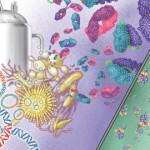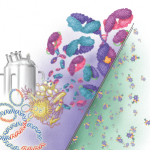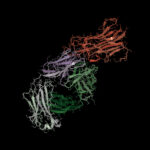
kapona/shutterstock.com
WASHINGTON, D.C.—Challenges abound for the manufacturing of biosimilar drugs—from their sheer size compared with small molecule drugs to the unknowable proprietary aspects of the originator drugs—an expert said at the 2016 ACR/ARHP Annual Meeting in a session titled Immunology Update: Biologic Agents: From Nature to Protein Engineering to Biosimilars.
Above all, because biosimilars are copies of originator drugs that have been created out of living cells, they can never be identical. The question is how different they are, and how to assess and manage those differences and their relevance, if any, said John Isaacs, MD, director of the Institute of Cellular Medicine and professor of clinical rheumatology at Newcastle University, Newcastle upon Tyne, United Kingdom.
Clinicians should be aware of these challenges and other thorny issues surrounding these medications, Dr. Isaacs said. “These are biological drugs, and they’re produced by living cells. They have to be because they’re so complicated,” he said.
This means that post-translational modifications will affect the primary protein product, which are not always predictable and dependent, for example, with regard to the precise culture conditions of the cells producing the biosimilar. Further, every batch of a therapeutic antibody (biosimilar or originator) comprises multiple subtly different variants, which is known as microheterogeneity.
“This is why biosimilars are not and cannot be identical to the originator in the same way as a chemically synthesized generic small-molecule drug can be identical to the original version of the drug,” Dr. Isaacs said.
The dawn of biosimilar drugs clearly brings the prospect for many advantages, he added. They’re far cheaper to develop because the regulatory process isn’t as lengthy, there’s less risk of failure in development, and the savings should mean wider availability of the drugs for patients. Developing a biosimilar can even lead to a greater understanding of the originator drug, because it becomes better characterized.
But process differences, including different cell lines and culture media, come with the potential for unpredicted effects, Dr. Isaacs said. These variables raise the prospect of immunogenicity, although not necessarily more immunogenicity.
“There’s no reason why it should be more immunogenic,” he said. “It could be less immunogenic, which would be a good thing. The fact is, there are unknowns.”
Dr. Isaacs described these implications:
Registries and post-marketing surveillance: Because biosimilars are licensed after relatively few patient exposures, it is even more important to monitor their effects long term than it is for originators.
Rare adverse events could occur, and “we have to have good registries and surveillance to pick those up,” Dr. Isaacs said. “[Registries] are critical to understand the long-term safety and efficacy [of biosimilars].”
Switching, substitution and interchangeability: Clinicians are now able to switch from the originator to a biosimilar, he noted, “and I think many of us are increasingly doing that.” But physicians are “responsible at the end of the day if something goes wrong.”
Dr. Isaacs said that there is talk about substitution of a biosimilar for a prescribed biologic, which could raise the prospect of a pharmacist changing a prescription from an originator to a biosimilar.
No biosimilars have yet been classified as interchangeable, and the ACR is advocating for a notification requirement in potential regulation and legislation.
Naming: Dr. Isaacs pointed out that the name of a drug comes with a connotation, and questions linger about how to refer to these drugs. In the U.S., biosimilars are given a suffix to distinguish them from the original drug. “In a sense, this implies noninterchangeability because these are different INNs (international nonproprietary names),” he said.
In Europe, the original drug and the biosimilar share the same INN, which “may inappropriately suggest interchangeability, because, for example, Remicade and Inflectra are both called infliximab.” He said it is now necessary for him to prescribe biologics by brand name to clearly identify the drug that he is prescribing.
Indication extrapolation: This involves the question of whether, once a biosimilar is approved for one indication, it should then be approved for other indications for which the originator drug is approved. It’s a “slightly controversial” topic, he said.
In 2014, an infliximab biosimilar was not approved in Canada for the treatment of Crohn’s disease even though it was approved for rheumatoid arthritis (RA), because of questions surrounding antibody-dependent cellular toxicity (ADCC) and the clinical importance of ADCC in Crohn’s as opposed to RA.
Dr. Isaacs said that the idea of variability from drug to drug and batch to batch is not new and is not confined to biosimilars, noting that there have been changes in all biological drugs over the years.
“Remicade’s gone through 35 changes during its lifecycle—not all big changes, but nonetheless changes,” he said. “So in terms of biosimilars, this kind of realization has reassured me that what we use today, even with the bio-originator, is probably not what we were using 10 or 20 years ago. That’s something to reflect on.”
Thomas R. Collins is a freelance writer living in South Florida.



